Chen Hydrology Research Group
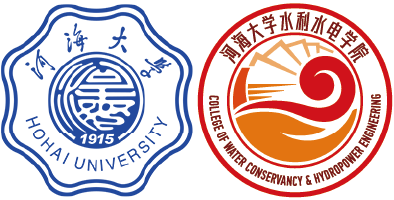





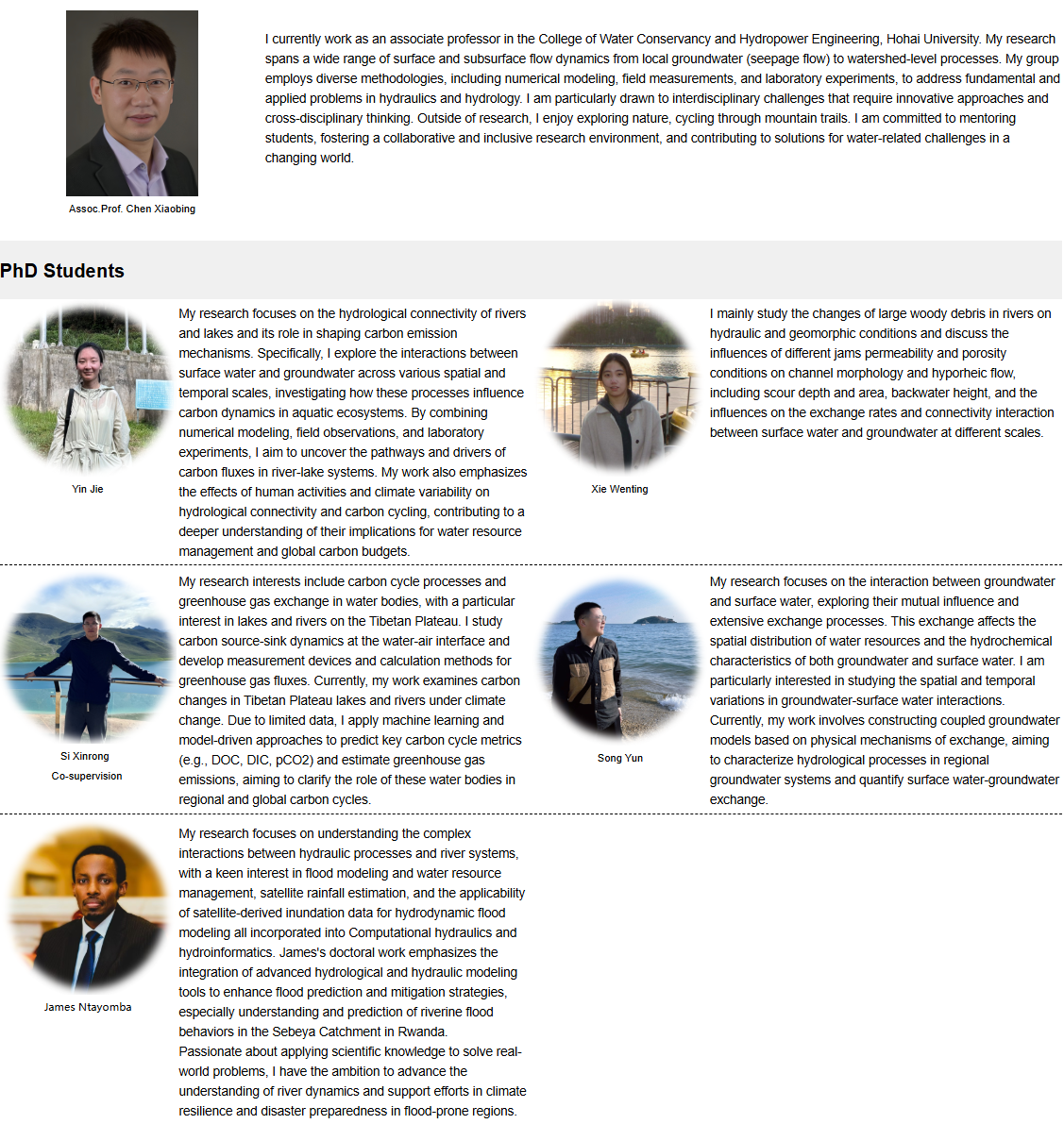


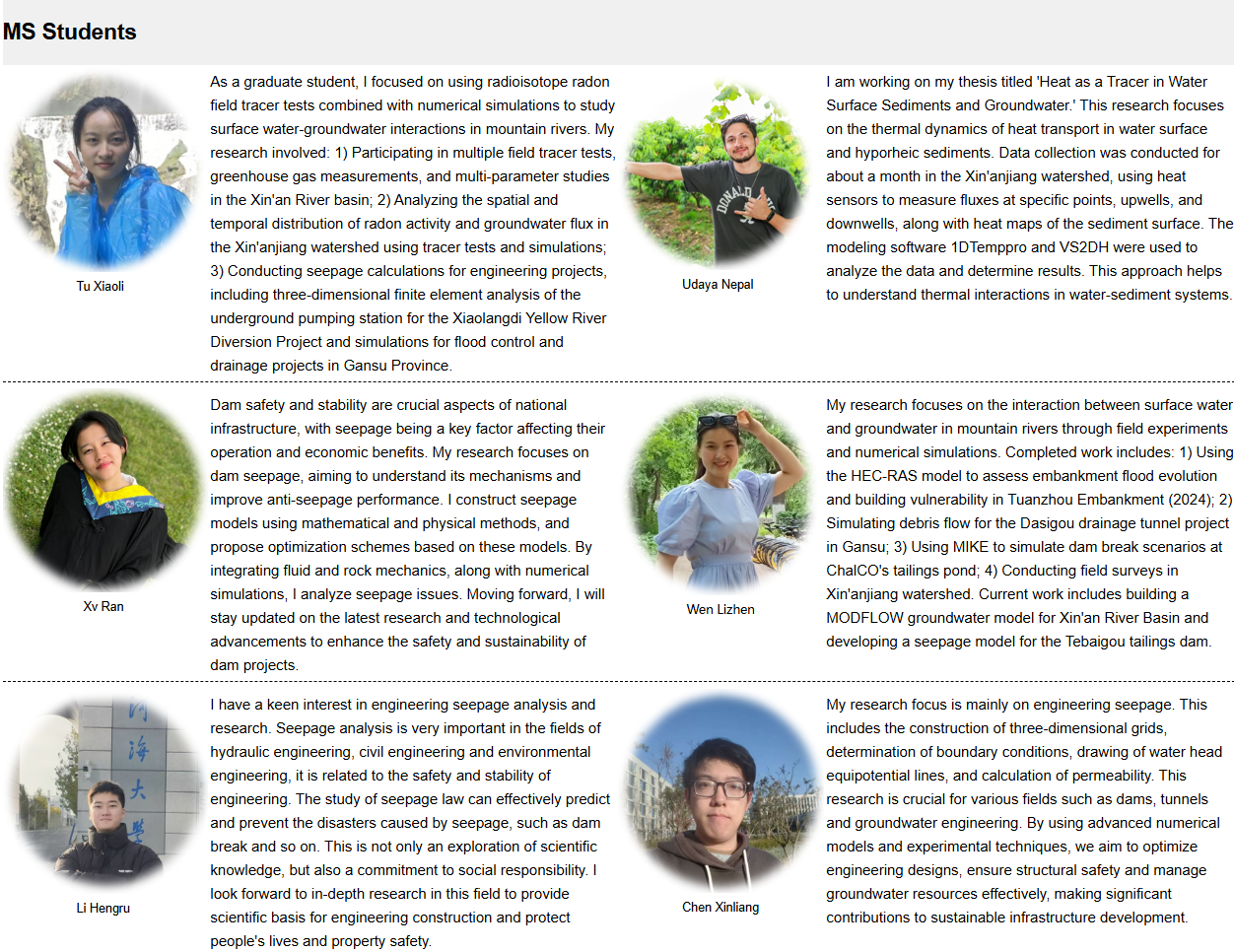





Assoc.Prof. Chen Xiaobing
I currently work as an associate professor in the College of Water Conservancy and Hydropower Engineering, Hohai University. My research spans a wide range of surface and subsurface flow dynamics from local groundwater (seepage flow) to watershed-level processes. My group employs diverse methodologies, including numerical modeling, field measurements, and laboratory experiments, to address fundamental and applied problems in hydraulics and hydrology. I am particularly drawn to interdisciplinary challenges that require innovative approaches and cross-disciplinary thinking. Outside of research, I enjoy exploring nature, cycling through mountain trails. I am committed to mentoring students, fostering a collaborative and inclusive research environment, and contributing to solutions for water-related challenges in a changing world.
PhD Students
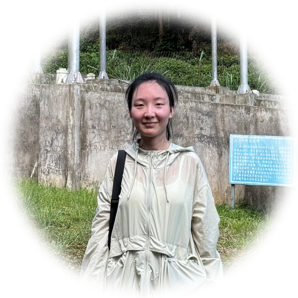


Yin Jie



Xie Wenting
I mainly study the changes of large woody debris in rivers on hydraulic and geomorphic conditions and discuss the influences of different jams permeability and porosity conditions on channel morphology and hyporheic flow, including scour depth and area, backwater height, and the influences on the exchange rates and connectivity interaction between surface water and groundwater at different scales.



My research interests include carbon cycle processes and greenhouse gas exchange in water bodies, with a particular interest in lakes and rivers on the Tibetan Plateau. I study carbon source-sink dynamics at the water-air interface and develop measurement devices and calculation methods for greenhouse gas fluxes. Currently, my work examines carbon changes in Tibetan Plateau lakes and rivers under climate change. Due to limited data, I apply machine learning and model-driven approaches to predict key carbon cycle metrics (e.g., DOC, DIC, pCO2) and estimate greenhouse gas emissions, aiming to clarify the role of these water bodies in regional and global carbon cycles.
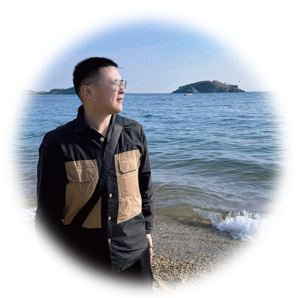


Song Yun
My research focuses on the interaction between groundwater and surface water, exploring their mutual influence and extensive exchange processes. This exchange affects the spatial distribution of water resources and the hydrochemical characteristics of both groundwater and surface water. I am particularly interested in studying the spatial and temporal variations in groundwater-surface water interactions. Currently, my work involves constructing coupled groundwater models based on physical mechanisms of exchange, aiming to characterize hydrological processes in regional groundwater systems and quantify surface water-groundwater exchange.



James Ntayomba
My research focuses on understanding the complex interactions between hydraulic processes and river systems, with a keen interest in flood modeling and water resource management, satellite rainfall estimation, and the applicability of satellite-derived inundation data for hydrodynamic flood modeling all incorporated into Computational hydraulics and hydroinformatics. James's doctoral work emphasizes the integration of advanced hydrological and hydraulic modeling tools to enhance flood prediction and mitigation strategies, especially understanding and prediction of riverine flood behaviors in the Sebeya Catchment in Rwanda.
MS Students



Tu Xiaoli
As a graduate student, I focused on using radioisotope radon field tracer tests combined with numerical simulations to study surface water-groundwater interactions in mountain rivers. My research involved: 1) Participating in multiple field tracer tests, greenhouse gas measurements, and multi-parameter studies in the Xin'an River basin; 2) Analyzing the spatial and temporal distribution of radon activity and groundwater flux in the Xin'anjiang watershed using tracer tests and simulations; 3) Conducting seepage calculations for engineering projects, including three-dimensional finite element analysis of the underground pumping station for the Xiaolangdi Yellow River Diversion Project and simulations for flood control and drainage projects in Gansu Province.



Udaya Nepal
I am working on my thesis titled 'Heat as a Tracer in Water Surface Sediments and Groundwater.' This research focuses on the thermal dynamics of heat transport in water surface and hyporheic sediments. Data collection was conducted for about a month in the Xin'anjiang watershed, using heat sensors to measure fluxes at specific points, upwells, and downwells, along with heat maps of the sediment surface. The modeling software 1DTemppro and VS2DH were used to analyze the data and determine results. This approach helps to understand thermal interactions in water-sediment systems.



Dam safety and stability are crucial aspects of national infrastructure, with seepage being a key factor affecting their operation and economic benefits. My research focuses on dam seepage, aiming to understand its mechanisms and improve anti-seepage performance. I construct seepage models using mathematical and physical methods, and propose optimization schemes based on these models. By integrating fluid and rock mechanics, along with numerical simulations, I analyze seepage issues. Moving forward, I will stay updated on the latest research and technological advancements to enhance the safety and sustainability of dam projects.



My research focuses on the interaction between surface water and groundwater in mountain rivers through field experiments and numerical simulations. Completed work includes: 1) Using the HEC-RAS model to assess embankment flood evolution and building vulnerability in Tuanzhou Embankment (2024);
2) Simulating debris flow for the Dasigou drainage tunnel project in Gansu; 3) Using MIKE to simulate dam break scenarios at ChalCO's tailings pond; 4) Conducting field surveys in Xin'anjiang watershed. Current work includes building a MODFLOW groundwater model for Xin'an River Basin and developing a seepage model for the Tebaigou tailings dam.
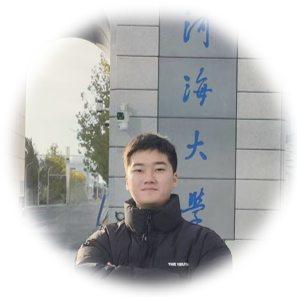


I have a keen interest in engineering seepage analysis and research. Seepage analysis is very important in the fields of hydraulic engineering, civil engineering and environmental engineering, it is related to the safety and stability of engineering. The study of seepage law can effectively predict and prevent the disasters caused by seepage, such as dam break and so on. This is not only an exploration of scientific knowledge, but also a commitment to social responsibility. I look forward to in-depth research in this field to provide scientific basis for engineering construction and protect people's lives and property safety.



My research focus is mainly on engineering seepage. This includes the construction of three-dimensional grids, determination of boundary conditions, drawing of water head equipotential lines, and calculation of permeability. This research is crucial for various fields such as dams, tunnels and groundwater engineering. By using advanced numerical models and experimental techniques, we aim to optimize engineering designs, ensure structural safety and manage groundwater resources effectively, making significant contributions to sustainable infrastructure development.
© 2024 College of Water Conservancy and Hydropower Engineering, Hohai University
Site Last Modified: September 1, 2024